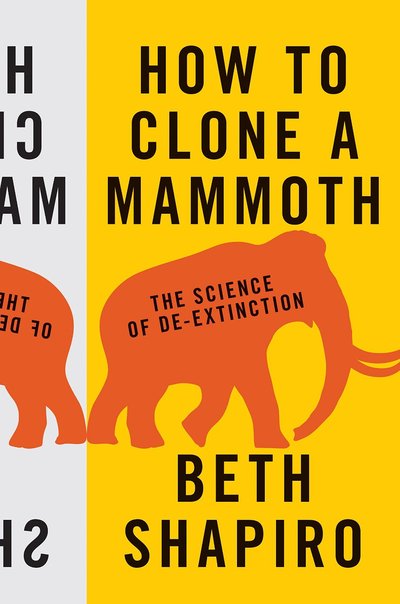

Purchase
The Science of De-Extinction
Princeton University Press
April 2015
On Sale: April 5, 2015
ISBN: 0691157057
EAN: 9780691157054
Kindle: B00QMV6S6Q
Hardcover / e-Book
Add to Wish List
Non-Fiction
Could extinct species, like mammoths and passenger pigeons,
be brought back to life? The science says yes. In How to
Clone a Mammoth, Beth Shapiro, evolutionary biologist
and pioneer in "ancient DNA" research, walks readers through
the astonishing and controversial process of de-extinction.
From deciding which species should be restored, to
sequencing their genomes, to anticipating how revived
populations might be overseen in the wild, Shapiro vividly
explores the extraordinary cutting-edge science that is
being used--today--to resurrect the past. Journeying to
far-flung Siberian locales in search of ice age bones and
delving into her own research--as well as those of fellow
experts such as Svante Pääbo, George Church, and Craig
Venter--Shapiro considers de-extinction's practical benefits
and ethical challenges. Would de-extinction change the way
we live? Is this really cloning? What are the costs and
risks? And what is the ultimate goal? Using DNA
collected from remains as a genetic blueprint, scientists
aim to engineer extinct traits--traits that evolved by
natural selection over thousands of years--into living
organisms. But rather than viewing de-extinction as a way to
restore one particular species, Shapiro argues that the
overarching goal should be the revitalization and
stabilization of contemporary ecosystems. For example,
elephants with genes modified to express mammoth traits
could expand into the Arctic, re-establishing lost
productivity to the tundra ecosystem. Looking at the
very real and compelling science behind an idea once seen as
science fiction, How to Clone a Mammoth demonstrates
how de-extinction will redefine conservation's future.
Comments
No comments posted.
Registered users may leave comments.
Log in or register now!
| 


 © 2003-2025 off-the-edge.net
all rights reserved Privacy Policy
© 2003-2025 off-the-edge.net
all rights reserved Privacy Policy